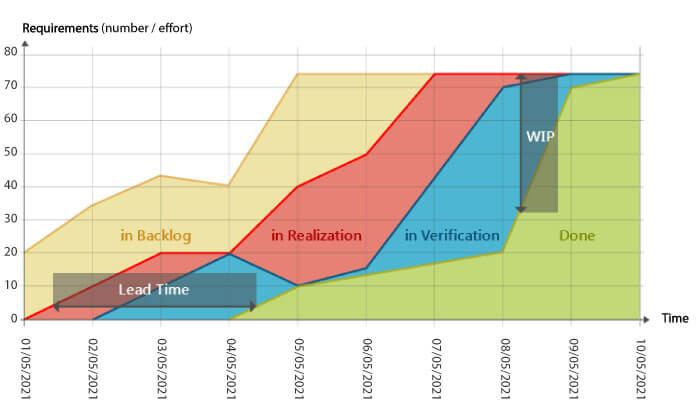What is WIP and why is it crucial in software projects?
To ensure early delivery of value to the client and proper flow of work in software development, controlling WIP is critical.
Work in progress (WIP) control is very useful in all software development, whether in a team or individually. It is important to maintain the workflow and avoid bottlenecks that delay delivery times.
WIP, which comes from the Kanban methodology, indicates the number of items that are being handled at the same time, concurrently. In other words, it is the number of tasks that are open simultaneously.
The reality indicates that when the WIP is reduced, the flow along the development process is accelerated and the waiting time at each of its points is reduced.
Limiting WIP helps us not to leave a large amount of work in a blocked or pending state, which causes "wasted" time and creates bottlenecks. It also helps us to focus our efforts to move forward, giving space for conversations about how to tackle the work.

The above is demonstrated by the following equation:
Lead time = WIP/Performance
How do we lower lead time? Reducing WIP
The optimal WIP
Now, how can we know what is the most appropriate value for our WIP? There is no default formula for setting optimal work-in-process limits, but there are some considerations that can help:
- If the WIP is too high, there are usually idle items, tasks left undone.
- If the WIP is very low, on the contrary, it will imply idle people, people with no work to do.
It is recommended to start with a low WIP, and then adjust this value according to the experience acquired during the time worked.
- If the items get stuck too often, the WIP will probably have to be raised.
- If the WIP limit is rarely reached, it is time to lower it.
Also, we must constantly monitor the workflow and be able to regulate and control WIP limits based on changing factors such as new business requirements, customer demands, team size and capacity, unexpected technical problems, etc.
Benefits of reducing WIP
Early delivery
Reducing WIP allows value delivery to reach the customer much earlier. This provides two benefits:
- It allows bugs to be identified and corrected when their impact is less.
- It decreases the uncertainty level, making constant estimation unnecessary and focusing the customer's attention on deliveries.
Efficiency
In addition, reducing WIP allows efficiency gains: new tasks do not enter until there is capacity to deal with them, which means that the entire team must collaborate in solving bottlenecks or issues that affect production.
Other
- Teamwork gains value over the individual importance of people.
- Focus on the work is increased, reducing errors.
- Idle moments and redundancies are avoided.
Stop starting and start finishing
As a conclusion, let us be very clear that limiting WIP does not mean working less, but limiting the number of tasks that are done in parallel (doing less work at the same time), focusing our efforts to improve the flow.
A premise or line of action that we can follow in this sense is the following: let's stop starting new tasks and start finishing the ones we already have.
Discover how we can help you
Please leave us your question and one of our assistants will contact you asap.